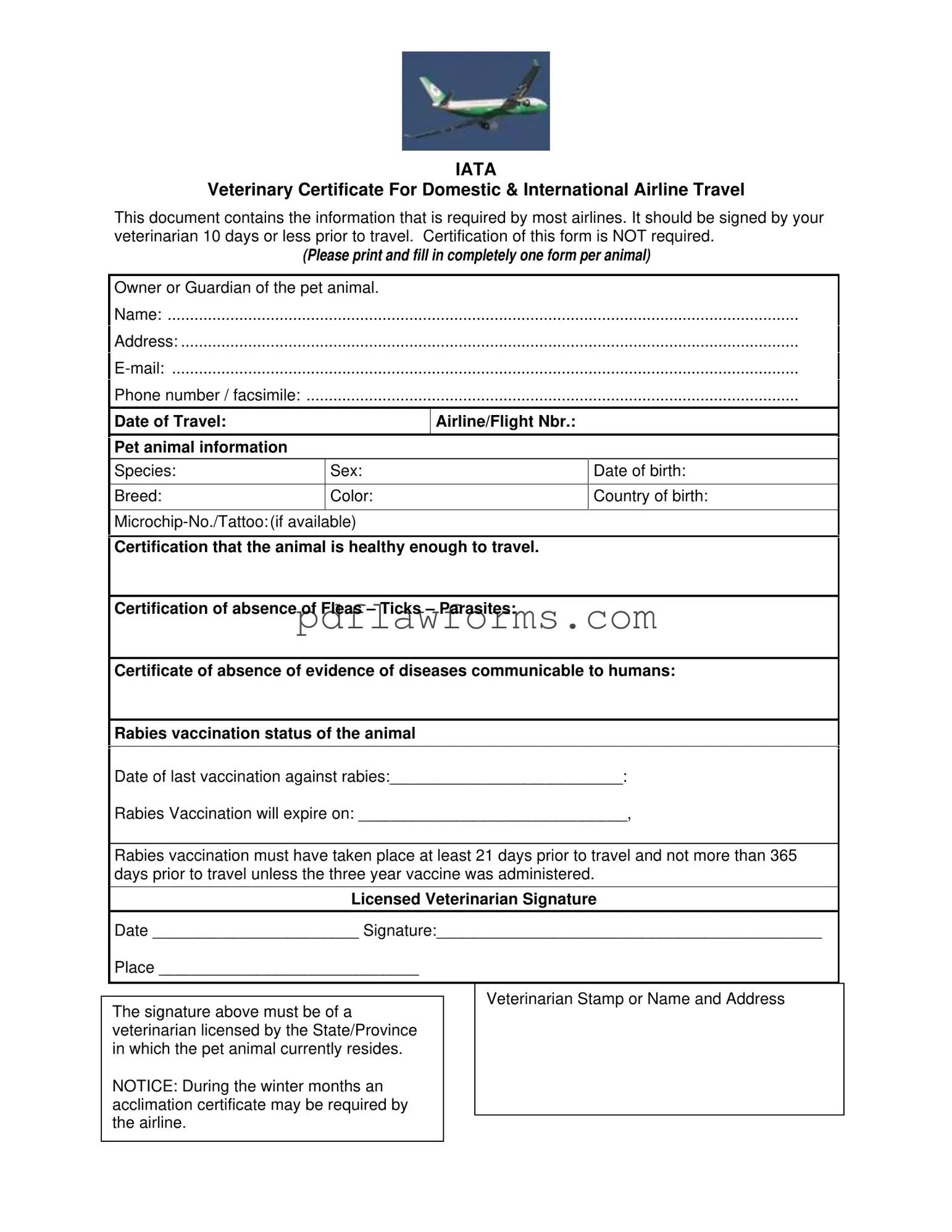Traveling with your pet can be a rewarding experience, but it also requires careful planning, especially when it comes to meeting airline requirements. One essential document for pet travel is the Veterinary Certificate Travel form, commonly known as the IATA Veterinary Certificate. This form is crucial for both domestic and international flights, as it contains vital information about your pet's health and vaccination status. Your veterinarian must complete and sign this form within 10 days of your travel date, ensuring that all details are accurate and up-to-date. The form includes sections for the owner's contact information, as well as specific details about the pet, such as species, breed, and vaccination history. Notably, the certificate confirms that your pet is healthy enough to travel and free from fleas, ticks, and other parasites. Additionally, it verifies the rabies vaccination status, which is particularly important for international travel. If your pet has a microchip or tattoo, that information should also be included. Remember, while certification of the form is not mandatory, it must be signed by a licensed veterinarian from your state or province. During winter months, airlines may require an acclimation certificate, so be sure to check the specific requirements for your journey. With the right documentation, you can ensure a smoother travel experience for both you and your furry companion.
